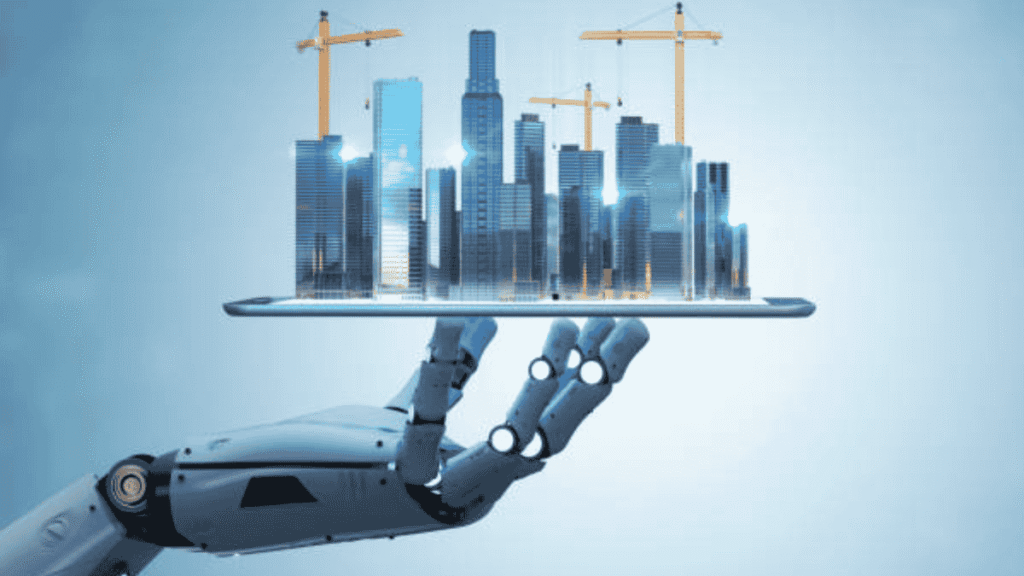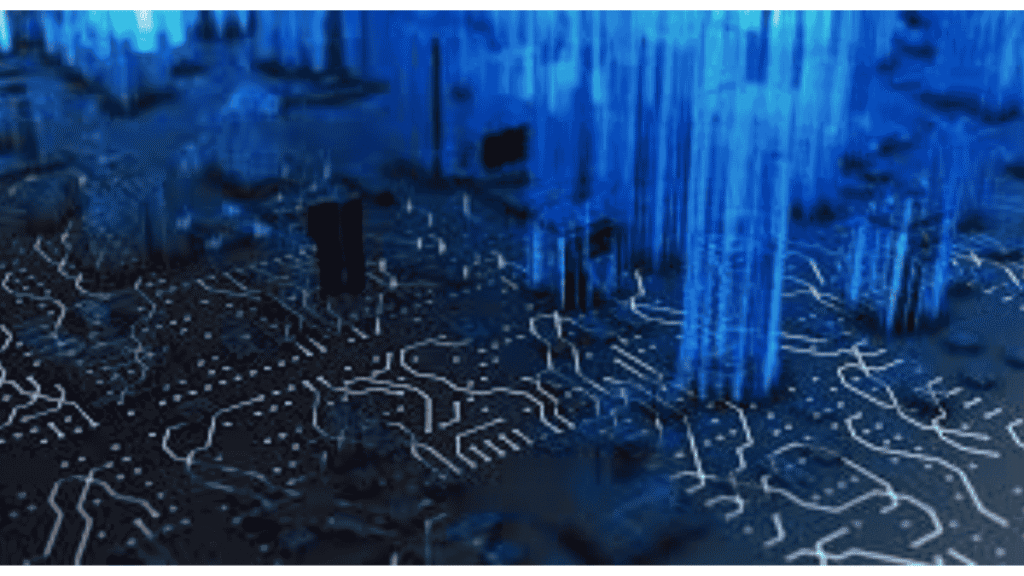Discover the great AI infrastructure buildout in 2025: $400B+ investments, Nvidia dominance, energy challenges & future trends powering the AI revolution.
In the fast-paced world of technology, few developments capture the imagination quite like the great AI infrastructure buildout. As we step into November 2025, this massive expansion of data centers, specialized hardware, and energy systems is not just a trend—it’s the backbone of the AI revolution. Companies are racing to build out the physical and digital foundations needed to support everything from advanced generative models to real-time enterprise automation. But what does this mean for businesses, investors, and everyday users? In this article, we’ll dive deep into the AI infrastructure buildout, exploring its drivers, challenges, and why it’s one of the most exciting opportunities in tech today.
The great AI infrastructure buildout is more than hype; it’s a trillion-dollar transformation reshaping global economies. With projections estimating $400 billion in spending for 2025 alone, tech giants are doubling down on investments that promise to unlock unprecedented innovation. Whether you’re a startup founder eyeing scalable cloud solutions or an investor tracking market leaders, understanding this buildout is essential.

What is the Great AI Infrastructure Buildout?
At its core, the great AI infrastructure buildout refers to the unprecedented surge in constructing and upgrading the hardware, networks, and power systems that make artificial intelligence viable at scale. Think massive data centers equipped with thousands of GPUs, high-speed networking fabrics, and sustainable energy sources—all designed to handle the voracious compute demands of AI models.
This isn’t your average tech upgrade. According to recent reports, global AI-related capital expenditures are on track to hit $3-4 trillion by 2030. The buildout kicked into high gear in early 2025, fueled by breakthroughs in generative AI and the need for edge computing. For instance, hyperscalers like Microsoft and Amazon are forecasting $371 billion in combined spending on AI data centers and computing resources this year—a 44% jump from 2024.
Why now? AI models like OpenAI’s latest iterations require gigawatts of power and petabytes of storage, far beyond what existing grids can handle. The result? A “gold rush” where infrastructure isn’t just supportive—it’s the new battleground for tech dominance.
Key Drivers Behind the AI Infrastructure Buildout
Several forces are propelling this AI infrastructure buildout forward, blending technological necessity with economic ambition.
Surging Demand for AI Compute Power
The explosion of AI applications—from chatbots to predictive analytics—has created an insatiable hunger for processing power. Nvidia’s GPUs remain the gold standard, with the company crossing a staggering $5 trillion market cap on the back of this demand. Partnerships like Nokia’s with Nvidia for Europe’s AI push highlight how even telecoms are pivoting to support this ecosystem.
Monthly data center additions now exceed 7 GW, with developers venturing into non-traditional hubs to meet needs. This isn’t limited to Big Tech; enterprises are adopting hybrid clouds to integrate AI workloads, driving a 97% year-over-year increase in compute and storage spending.
Massive Investments from Tech Titans
No discussion of the great AI infrastructure buildout is complete without spotlighting the cash flowing from industry leaders. Meta, for example, plans to pour $600 billion into U.S. infrastructure by 2028, with $30 billion already spent in the first half of 2025 alone. Microsoft is close behind, targeting $80 billion for AI-enabled data centers, half of it stateside.
Then there’s the Stargate Project—a $500 billion joint venture between Oracle, OpenAI, and SoftBank to erect the largest AI data centers in history. Announced with fanfare by former President Trump, it’s poised to add 205 GW of capacity by decade’s end. These aren’t isolated bets; they’re part of a broader strategy where AI infrastructure becomes a moat against competitors.
Policy and Geopolitical Push
Governments are getting in on the act too. The White House’s America’s AI Action Plan emphasizes rapid data center permitting and workforce training for roles like electricians and HVAC techs. Meanwhile, rising U.S.-China tensions are accelerating domestic chip production and secure supply chains, benefiting players like Broadcom and AMD in the AI infrastructure space.

Major Players Shaping the AI Infrastructure Landscape
The great AI infrastructure buildout is a team effort, but a few stand out for their scale and innovation.
Nvidia: The Undisputed Chip King
Jensen Huang’s Nvidia isn’t just supplying GPUs; it’s investing in the ecosystem. A landmark $100 billion tie-up with OpenAI includes datacenter chips and equity stakes, deploying at least 10 GW of systems. Nvidia’s even briefing rivals like Google on in-house chips to foster collaboration.
Microsoft and OpenAI: The Power Duo
Microsoft’s Azure is the go-to for OpenAI’s models, bolstered by deals like a $17.4 billion GPU capacity agreement with Nebius Group. Their synergy creates a flywheel: innovative AI on robust AI infrastructure, attracting more developers.
Emerging Challengers and Consortia
Don’t sleep on consortia like the $40 billion acquisition of Aligned Data Centers by BlackRock, Nvidia, xAI, and Microsoft. Startups like Astera Labs are carving niches in connectivity, with revenues doubling to $396 million in 2024 amid AI boom partnerships. On the blockchain side, projects like @wardenprotocol are building interoperable AI infrastructure for agents across chains.
Challenges in the Great AI Infrastructure Buildout
For all its promise, the AI infrastructure buildout faces real hurdles that could slow progress if unaddressed.
The Energy Crunch
AI data centers could consume as much power as small nations by 2030, with U.S. electricity demand surging 250% from 2025 levels. Grid stress tops concerns for 67% of executives, per Deloitte’s 2025 survey. Solutions like Google’s nuclear plant restart aim to counter this, but permitting delays loom large.
Talent and Skills Gaps
Only 14% of leaders feel equipped with the right talent for AI goals, with 61% citing shortages in managing specialized AI infrastructure. Initiatives like Debenhams’ £1.35 million AI Skills Academy signal a push for upskilling, but the gap persists.
Sustainability and Ethical Concerns
Nearly a third of organizations are willing to pay 20% more for renewable-powered data centers. Water usage and carbon footprints are under scrutiny, prompting innovations in efficient cooling and geothermal tech. Investor reality checks are hitting too—Meta’s stock dipped on a $16 billion tax hit tied to AI capex.
Innovations Fueling the AI Infrastructure Buildout
Amid challenges, ingenuity abounds in the great AI infrastructure buildout.
Advanced nuclear and geothermal energy promise zero-carbon power with minimal land use. Custom silicon from AMD and Broadcom optimizes for AI workloads, while agentic AI—autonomous systems handling complex tasks—demands even more robust networks.
Space-based data centers are an audacious frontier, potentially slashing energy strain by orbiting infrastructure. On the software side, tools like GitHub’s Agent HQ unify AI agents from Anthropic, OpenAI, and Google.
The Future of AI Infrastructure: What Lies Ahead?
Looking to 2030, the AI infrastructure buildout will decentralize further, with edge computing bringing processing closer to users for lower latency. Bandwidth shortages, now a top issue for 53% of firms, will spur innovations in photonics and quantum networking.
Economically, this could add trillions to global GDP, but only if we balance growth with sustainability. The White House’s plan to export “full-stack AI packages” underscores U.S. leadership ambitions. For investors, ETFs like the VictoryShares Free Cash Flow Growth ETF (GFLW) are betting on enablers like Nvidia and Palantir.
In essence, the great AI infrastructure buildout isn’t just building servers—it’s constructing the future. As demand outstrips supply, those who invest wisely in resilient, green AI infrastructure will lead the charge.
What is the future of Artificial Intelligence in 2025?
In 2025, AI evolves toward multimodal and agentic systems that autonomously handle tasks like decision-making and content creation, driving breakthroughs in healthcare, education, and defense. Expect widespread adoption of reasoning models and sustainable infrastructure, but challenges like energy demands and ethical oversight will shape progress. Overall, AI will amplify human productivity while raising global security concerns.
What is the AI strategy 2025?
The 2025 AI strategy emphasizes accelerating innovation through infrastructure investments, like the U.S.’s $470B+ in AI via the CHIPS Act, focusing on domestic chip production and ethical governance. Businesses should prioritize distributed leadership, proprietary data integration, and responsible AI to maximize ROI amid exponential growth. Globally, it balances competition with alliances to counter rivals like China.
How will my 2025 be according to AI?
AI will personalize your 2025 by acting as virtual co-workers for tasks like scheduling and research, boosting daily efficiency by up to 3x in revenue per employee. Expect hyper-tailored experiences in health, shopping, and learning, but with risks like deepfake scams requiring vigilance. Overall, it frees time for creativity while demanding AI literacy.
How will AI reshape 2025?
AI will reshape 2025 by enabling agentic systems for autonomous workflows, cutting energy use via efficient models, and transforming industries like logistics and governance. It accelerates defense tech and personalized medicine but intensifies chip wars and sustainability debates. Expect exponential growth in adoption, with ethical regulations catching up.
What is the 30% rule for AI?
The 30% rule for AI balances automation by having machines handle 70% of repetitive tasks like data processing, while humans oversee the critical 30% requiring judgment and creativity. It prevents over-reliance, enhances productivity (e.g., in contracts or coding), and safeguards jobs by focusing on human strengths like ethics. Applied in tools like Netflix recommendations, it ensures hybrid efficiency.
What are the 4 methods of AI?
The four core methods of AI are supervised learning (labeled data for predictions, e.g., spam filters), unsupervised learning (pattern discovery in unlabeled data, e.g., clustering), reinforcement learning (trial-and-error rewards, e.g., game AI), and deep learning (neural networks for complex tasks like image recognition). These build on symbolic (rule-based) and connectionist (neural) approaches to enable adaptive systems. Together, they power everything from robotics to NLP.
What are 7 types of AI?
The seven types of AI are: Reactive Machines (basic, no memory, e.g., chess AI); Limited Memory (learns from data, e.g., self-driving cars); Theory of Mind (understands emotions, emerging); Self-Aware (human-like consciousness, theoretical); Narrow AI (task-specific, e.g., Siri); General AI (human-level versatility, hypothetical); and Super AI (surpasses humans, speculative). Narrow AI dominates today, blending functionality and capability levels for real-world apps. Future types promise broader autonomy.
Which country is no. 1 in AI?
The United States leads in AI in 2025, with 50% of global compute power (39.7M H100 equivalents) and top investments ($470B+), driven by firms like OpenAI and Nvidia. China follows closely in clusters (230) and patents, narrowing the gap via $133B spending. U.S. dominance stems from innovation ecosystems and policy like CHIPS Act.
Which is the best AI in 2025?
GPT-4o from OpenAI is the best overall AI model in 2025, topping benchmarks (e.g., 94.6% on math tests) with multimodal reasoning for text, images, and voice in 45% of deployments. For coding, Claude 3.7 excels; Gemini 2.5 Pro for research (1M-token context). Choice depends on needs—GPT-4o for versatility.

